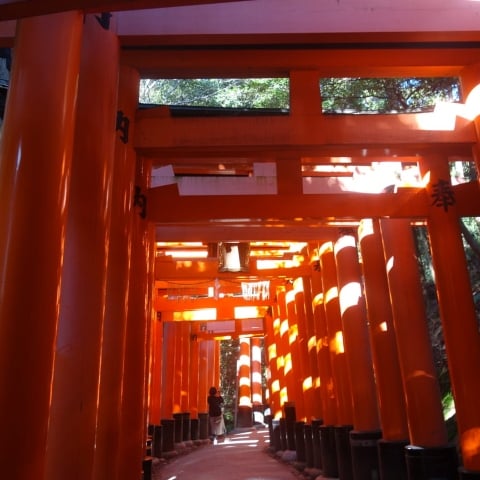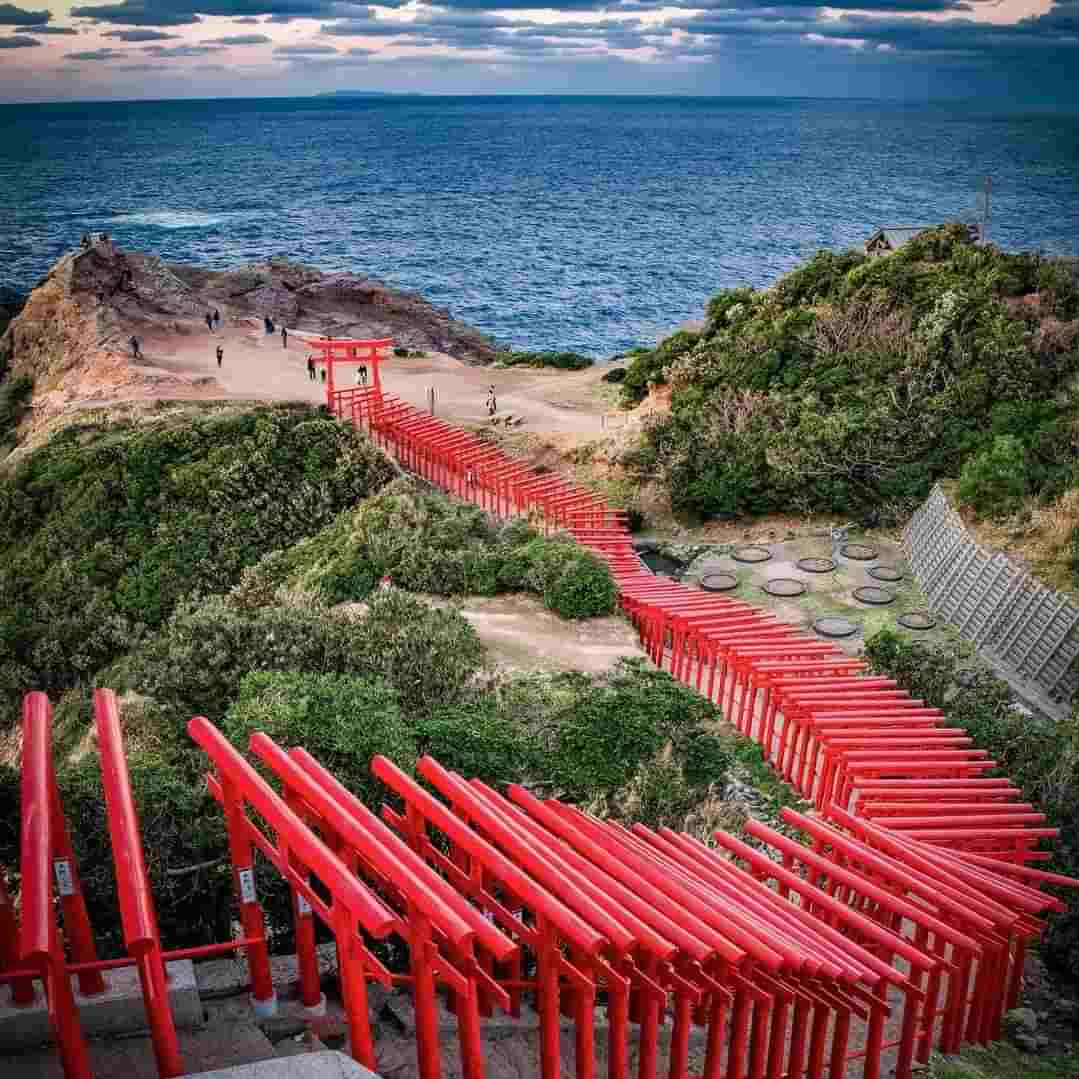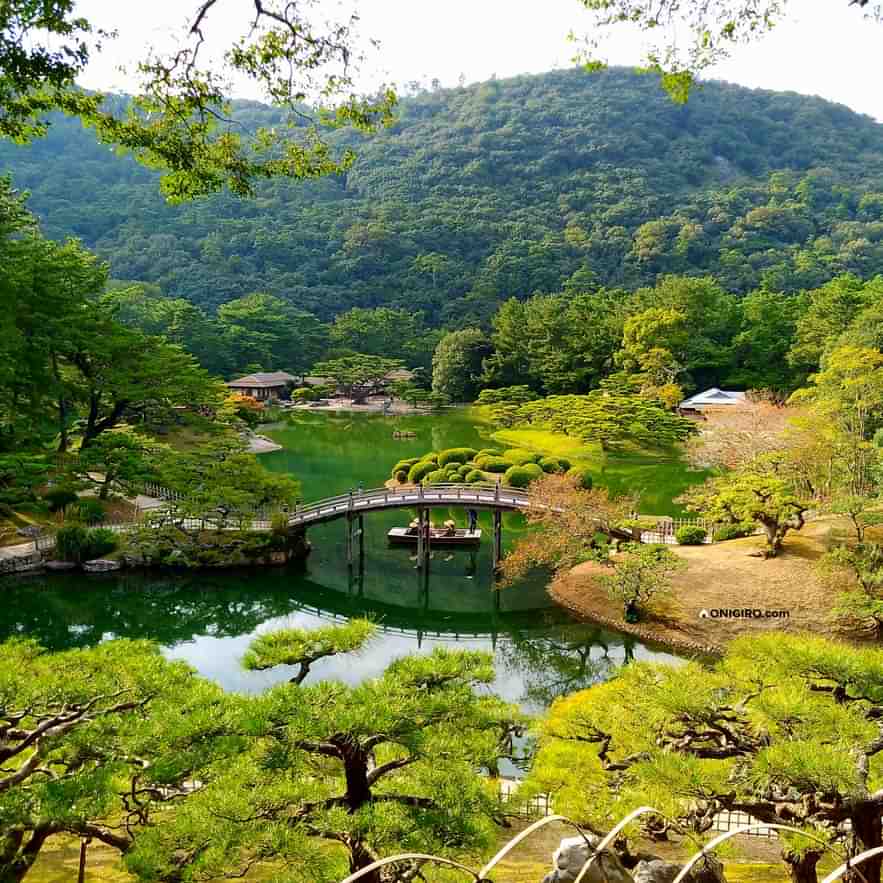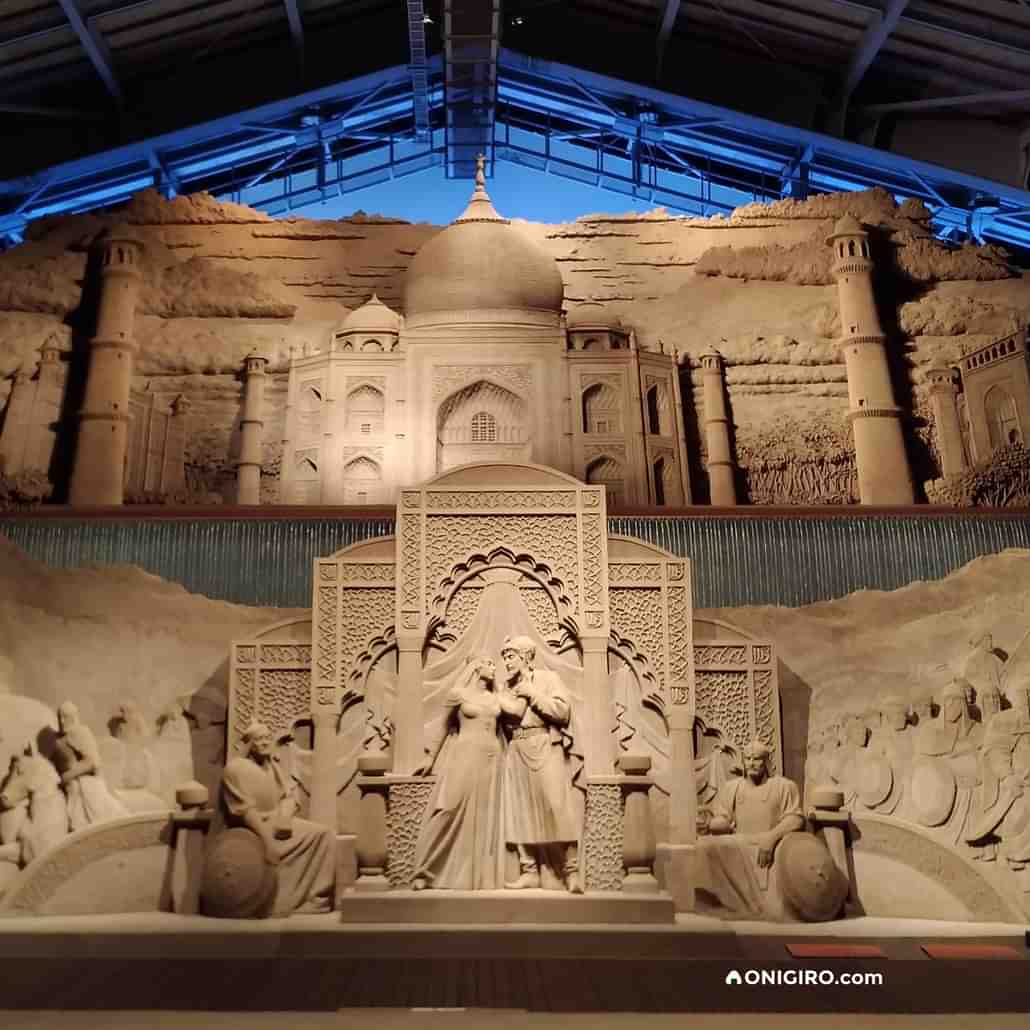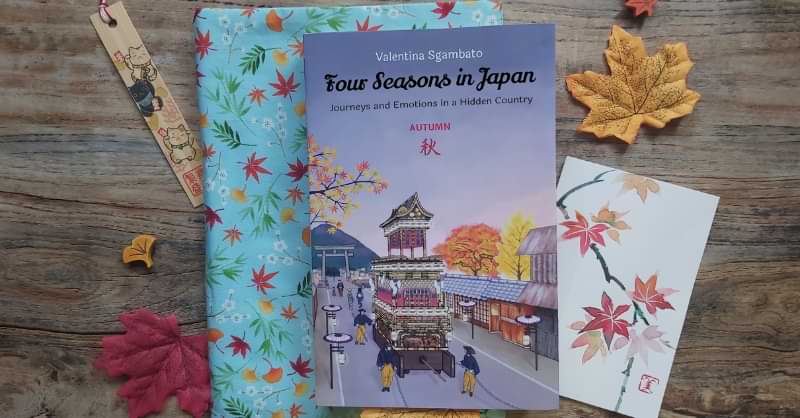Aomori prefecture & city guide
Aomori, the capital of Aomori prefecture, is famous for its delicious apples and Nebuta Matsuri
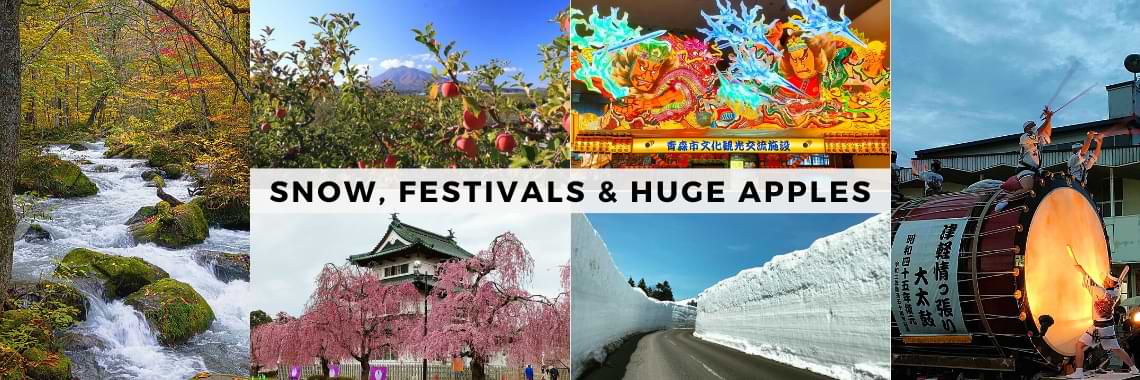
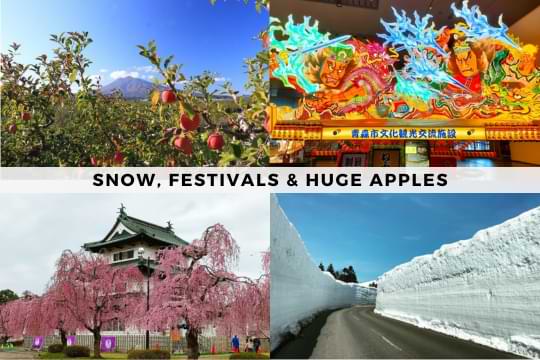
Here are our favorite times of the year to visit Aomori city and prefecture, while at the end of this page you will find an original itinerary to explore the city:
- In mid-February, immersed in the fantastic snow of northern Japan, between festivals dedicated to it and illuminations;
- During the first week of August, to admire the beautiful floats of the various Neputa Matsuri.
Festival & events in Aomori
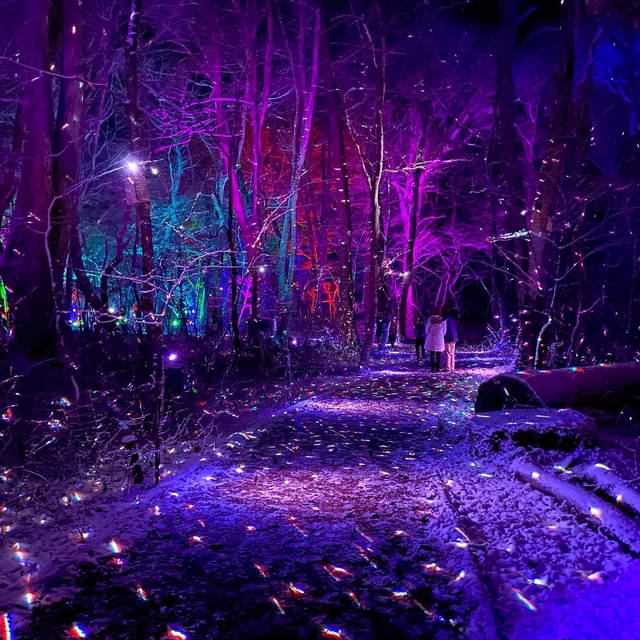
Towada-ko Fuyu-monogatari
十和田湖 冬物語
When: late January~mid February
[past dates: 27/01~19/02 (2023), 16/01~20/02 (2022)]
Where: illuminations and fireworks at Lake Towada-ko
Shows of lights are set up in the snowy park overlooking the lake, while small fireworks displays are held almost every evening on the surface of the lake.
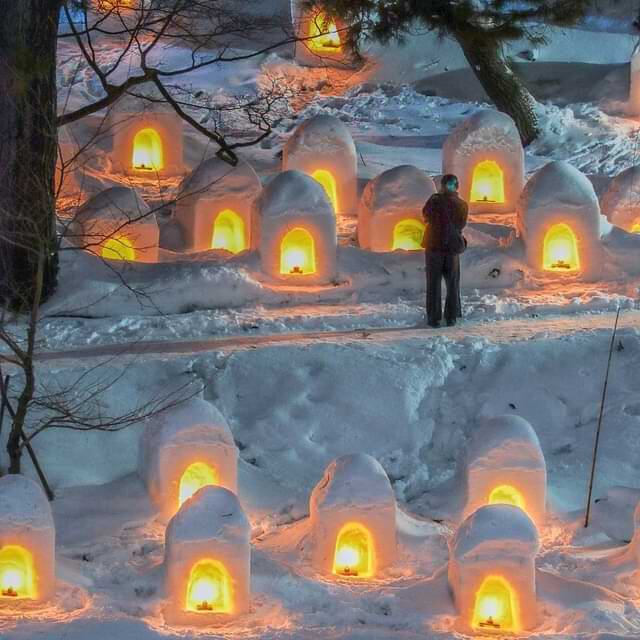
Hirosaki-jō Yuki-tōrō Matsuri
弘前城雪燈籠まつり
When: four days around February 10th
[past dates: February 9~12 (2023), 10~13 (2022), 8~11 (2020)]
Where: inside the Hirosaki-kōen Park
In the park of the Hirosaki-jō Castle, over 300 mini-kamakura, 150 lanterns and various snow sculptures illuminated through colored projections are set up.
Around the city, nearby the park, there are other attractions such as snow slides for children, lighted tunnels and much more.
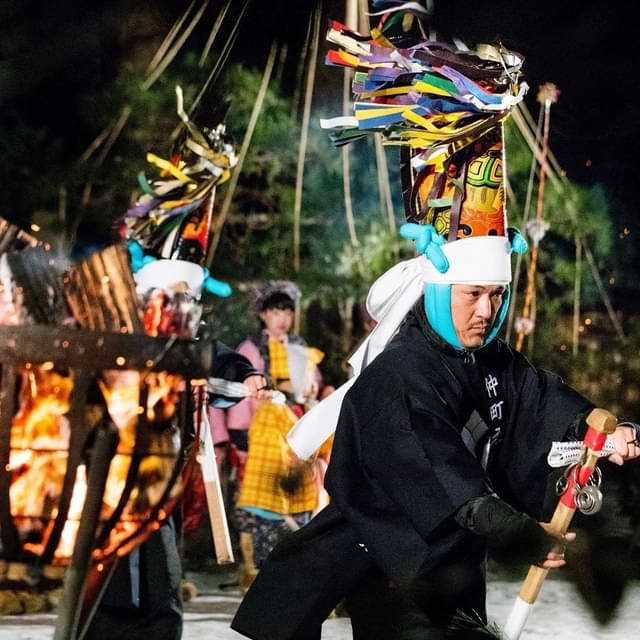
Hachinohe Enburi
八戸えんぶり
When: 17~20 February, each year same dates
Where: in front of Hachinohe city hall and other places around the city center
Enburi is a kind of pre-celebration performing art that is performed throughout the Tōhoku region, mainly in Hachinohe City, as an early spring Shinto ritual.
Dances are held in different places around the city depending on the day, some of them are closed to public. Dancers wear long hats depicting auspicious beasts such as cranes and turtles.
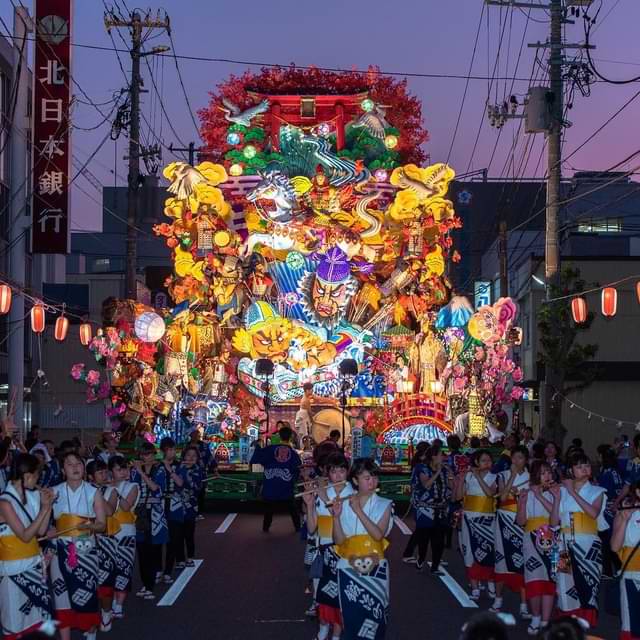
Hachinohe Sansha Taisai
八戸三社大祭
When: 31 July~4 August, each year same days
Where: central streets of Hachinohe
The festival consists in processions of twenty-seven huge and colorful festive floats and three mikoshi through the central streets of Hachinohe. Its rites center on the three Shinto shrines Ogami-jinja, Chōjasan-Shinra-jinja and Shinmei-gū.
On August 2, the Chōjasan-Shinra-jinja Shrine holds the annual Kiba-dakyū (Japanese polo) tournament from 2 p.m. to 4 p.m., a traditional sport that is held only here and in Yamagata prefecture and is related to the imperial family.
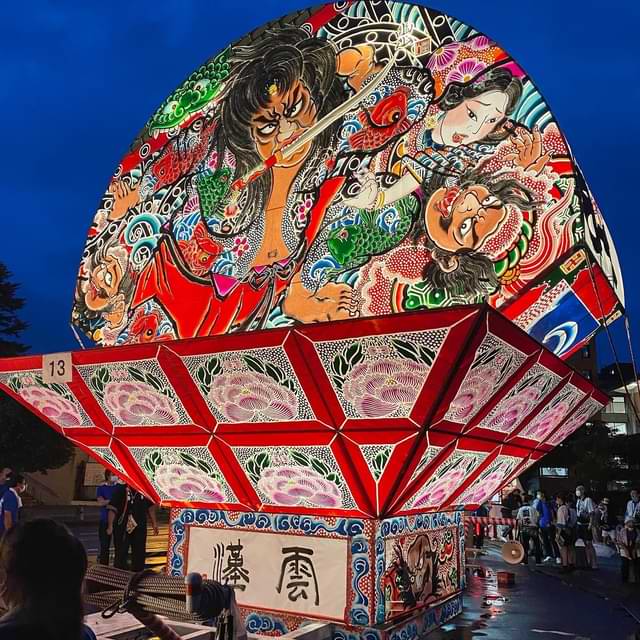
Hirosaki Neputa Matsuri
弘前ねぷたまつり
When: 1~7 August, each year same days
Where: central streets of Hirosaki
Crowds of citizens parade through the city chanting "Ya-Ya-Dō" to the beat of huge taiko drums, pulling Neputa festive floats with images of warriors on them. Hirosaki Neputa has the largest number of floats in the prefecture, around 80, some of which have a special rotating fan shape.
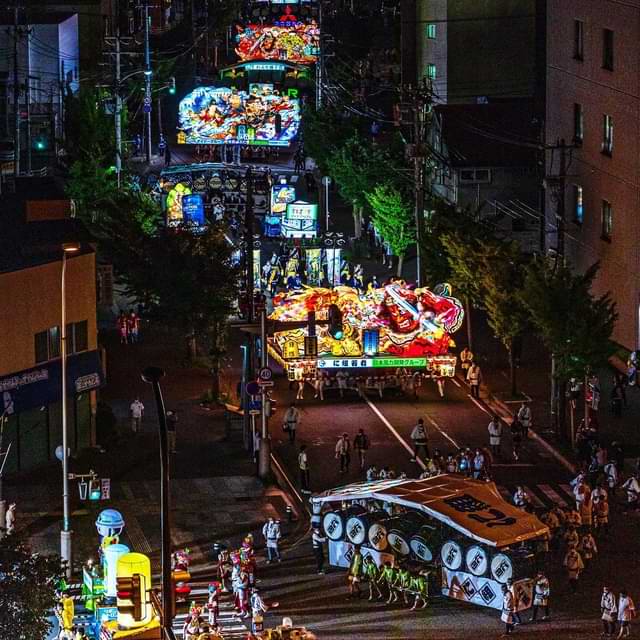
Aomori Nebuta
青森ねぶた
When: 2~7 August, each year same days
Where: city central streets, east of Aomori station
This is the most famous festival in the entire prefecture, among the three largest in all the Tōhoku region, the climax of which lies in the evening parades of huge illuminated Nebuta floats, depicting figures from Japanese folklore and beyond.
To accompany the parades of the floats, the local people dance in time with the song "rasserā", an abbreviated dialect version of "irasshai", an invitation to all visitors to join the dances. Similar Nebuta Matsuri are also held in other cities of the prefecture in the same period.
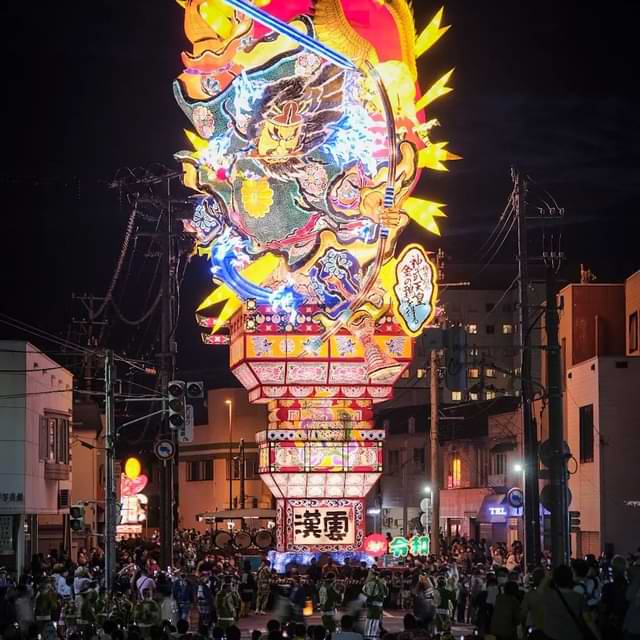
Goshogawara Tachi-neputa
五所川原 立佞武多
When: 4~8 August, each year same days
Where: through the central streets of Goshogawara
During the days of the festival, 15 different festive floats parade through the city streets. The largest of these reach 23-meters in height and are exhibited during the rest of the year in the Tachi-neputa museum.
During the evening of August 3rd, a large fireworks show, while the following evenings the floats parade illuminated from inside, accompanied by local dances and the typical song “Yattemare! Yattemare!”.
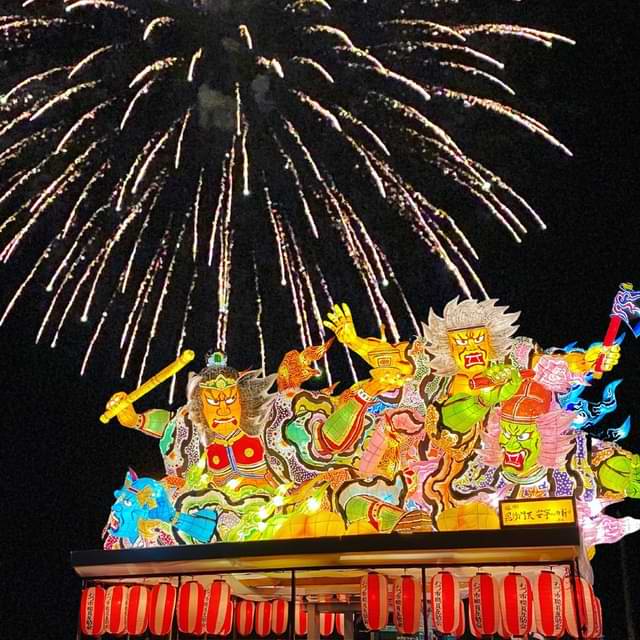
Ōminato Nebuta
大湊ねぶた
When: first weekend of August
[past dates: August 5~7 (2022), 6~8 (2021)]
Where: fireworks at Ōhira Quay and float parades around Ōminato Station area
On Friday evening, an hour of fireworks are launched from the port and are reflected on the water. On Saturday and Sunday, the festivities continue with evening parades of lighted floats, mainly around the Ōminato station area.
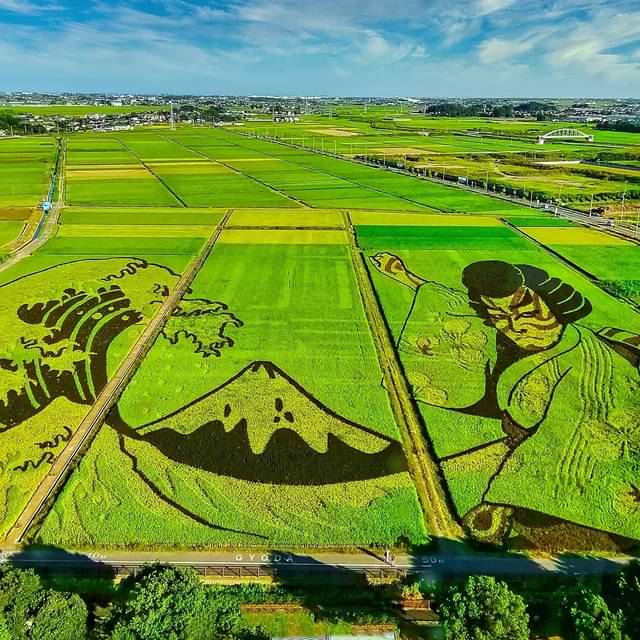
Inakadate-mura Tanbo-āto
田舎館村 田んぼアート
When: mid August
Where: panoramic view from the observation deck
Wonderful designs are created in the rice fields of the village using rice of seven different colors. Admired from the top of the nearby observation deck, they are real works of art.
Rice is planted around the end of May to be able to admire its beauty starting from the end of July until the beginning of September, while the harvest takes place in mid-October.
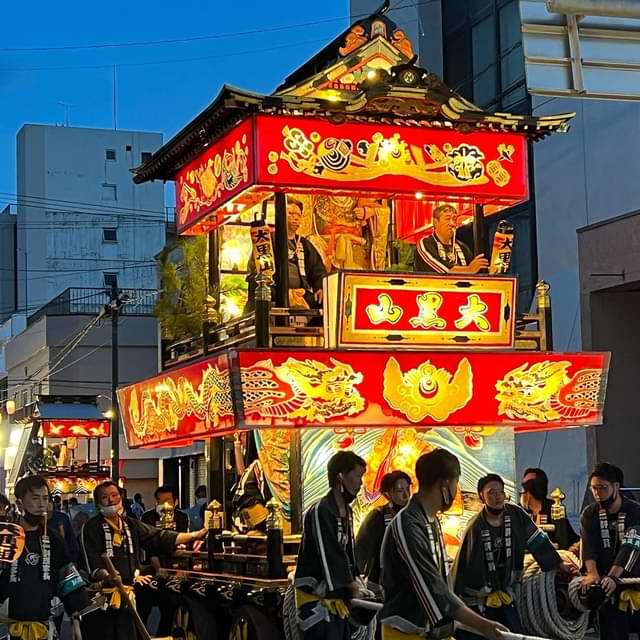
Tanabu Matsuri
田名部まつり
When: 18~20 August, each year same days
Where: area around the Tanabu-jinja Shrine
Parades of 5 yama (wooden double-decker festive floats) pulled by two cords through the central streets of the city. The floats are lit up in the evening for the night parades and each of the floats represents a different district of the city.
Best things to do in Aomori
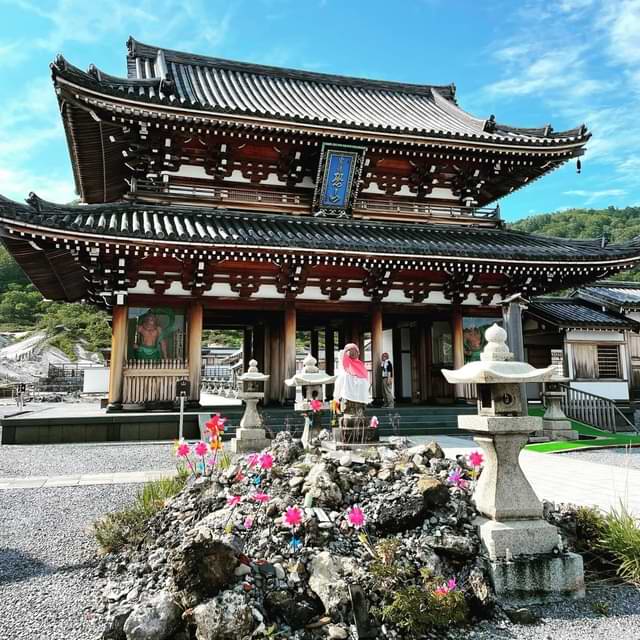
Osore-zan Bodai-ji
恐山菩提寺
Mount Osore-zan is one of Japan's three most sacred mountains together with Mount Kōya-san and Mount Hiei-zan. The temple is located on the bank of the caldera, with a strong sense of desolation in the area such that there is a local saying "people go to Mount Osore-zan after death" since ancient times.
There are 4 hot spring huts in the complex, and worshipers can bathe for free. It is also possible to stay in the "Jixiang Pavilion".
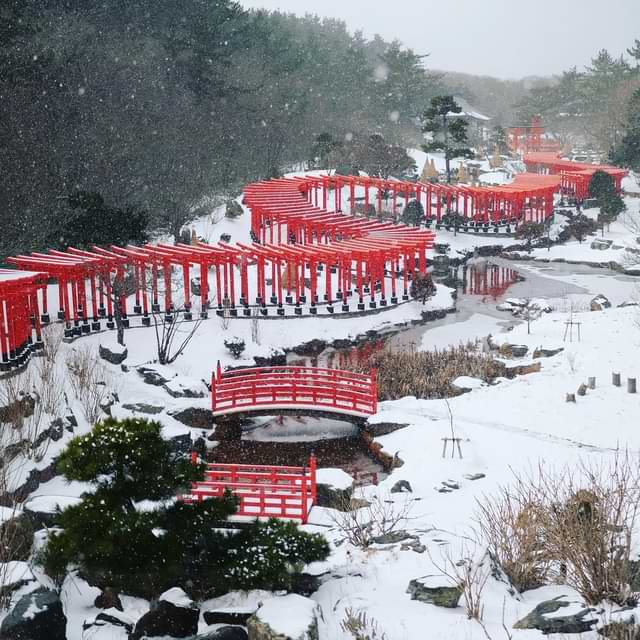
Takayama Inari-jinja
高山稲荷神社
A Shinto shrine dedicated to Inari Ōkami, with a distinctive red torii tunnel that wind along its path, really suggestive with the white snow. The shrine is surrounded by nature and is located close to the Sea of Japan shores.
Google Maps | Official website
Pic © boozytomy
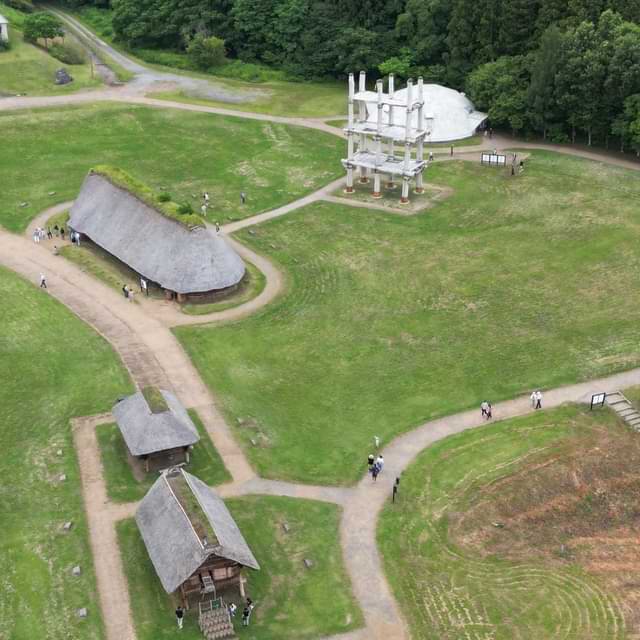
Sannai-Maruyama-iseki
三内丸山遗迹
An archaeological site and museum containing the ruins of a Jōmon period settlement discovered in 1992. Excavation has led to the discovery of storage pits, above ground storage and long houses. this site was designated as a UNESCO World Heritage Site in 2021.
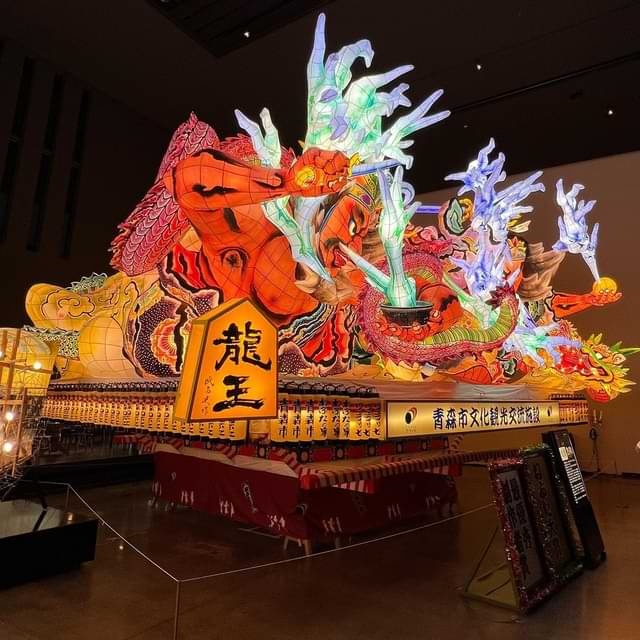
Nebuta-no-ie Wa・Rasse
ねぶたの家 ワ・ラッセ
The official museum that displays four Nebuta floats from the most recent Aomori Nebuta Matsuri summer festival, alongside media related to the festival.
Google Maps | Official website
Pic © kenzo6732
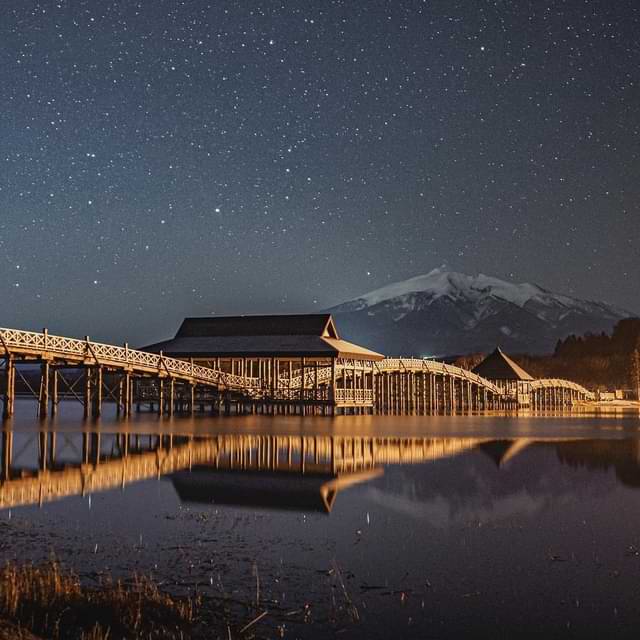
Tsuru-no-maihashi
鶴の舞橋
It's the longest wooden arch bridge in Japan (300 meters) over Lake Tsugaru Fujimi-ko. It is a three-tiered bridge with stilt-type rest areas between the two arches.
The name comes from the meaning of "beautiful like a dancing crane", and if the rest area is likened to the body of a crane, the arched bridge looks like a crane spreading its wings to the left and right.
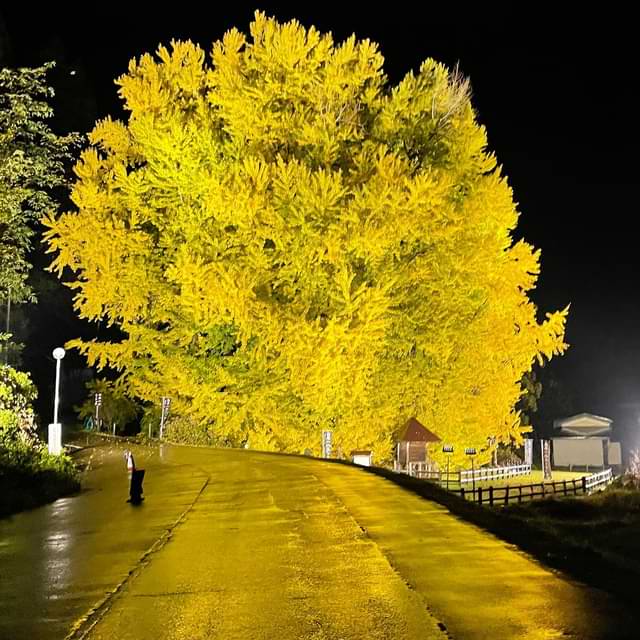
Kita-Kanegasawa-no-ōiichō
北金ヶ沢の大イチョウ
This ginkgo is the largest in Japan, standing 40 meters tall and with a circumference of 22. Although it is believed to be over 1000 years old, a study would appear to be less than 400 years old. Considered a sacred tree, during the autumn foliage it is illuminated from below at night and receives a large influx of tourists at any time of day.
Google Maps | Official website
Pic © fukadoko

Koganesaki Furōfushi Onsen
黄金崎不老ふ死温泉
A rotenburo by the Sea of Japan from which you can see a breathtaking sunset. The facility is made up of two separate pools, one for women only and the other accessible to both genders.
As there is no artificial lighting, the pools are only accessible from sunrise to sunset. Nearby is the main onsen facility which is an overnight hotel with several other indoor hot baths.

Hakkōda Ropeway
八甲田ロープウェー
This cableway offers a wonderful panoramic view of Towada-Hachimantai National Park. The landscape leaves you speechless both in autumn, with the trees that light up with the colors of the foliage, and in winter, when the same trees turn into "snow monsters".
The ropeway takes you to the top of one of the peaks of Mount Hakkōda, from which several hiking trails immersed in wild nature start. At the base station, however, it is possible to ski in the ski area.
Google Maps | Official website
Pic © ki42918ri
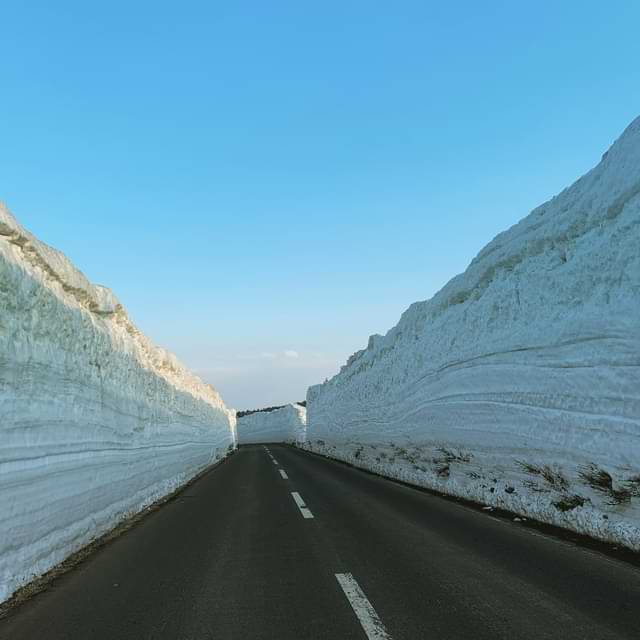
Hakkōda Yuki-no-kairō
八甲田雪の回廊
This is a section of Japan's national highway 103. It became famous as Hakkōda Gold Line Snow Corridor for the large amount of snow that receives around Sukayu Onsen, a small onsen town famous for its 1,000-person mixed bath. The amount of snow at the edge of the road is more than 10 meters high and lasts until mid May.
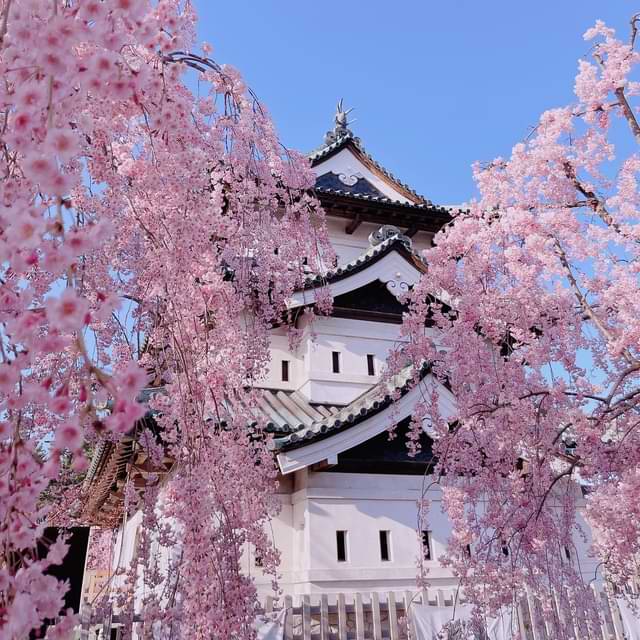
Hirosaki-jō
弘前城
Constructed in 1611 and also referred to as Takaoka-jō Castle, it's a three-story building with three roofs and a height of 14 meters, relatively small if compared with the other great Japanese castles.
The surrounding Hirosaki-kōen Park is one of Japan's most famous cherry blossom spots, receiving over a million visitors thanks to the park's 2600 sakura that blooms later than the rest of the country, between the end of April and the beginning of May.
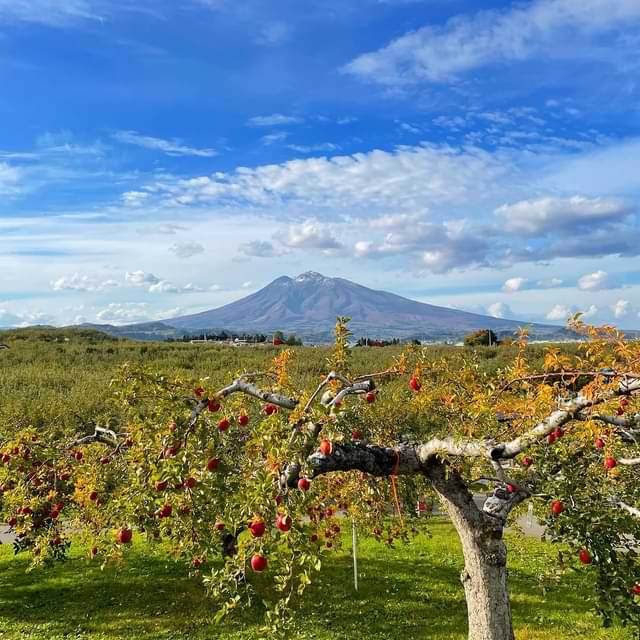
Ringo-kōen
りんご公園
Aomori apples are the most famous in Japan, and there are over 2,300 trees of 80 different apple varieties in this park. Between the beginning of August and the beginning of November, paying an entrance ticket you can also experience the apple harvesting from the trees in the park.
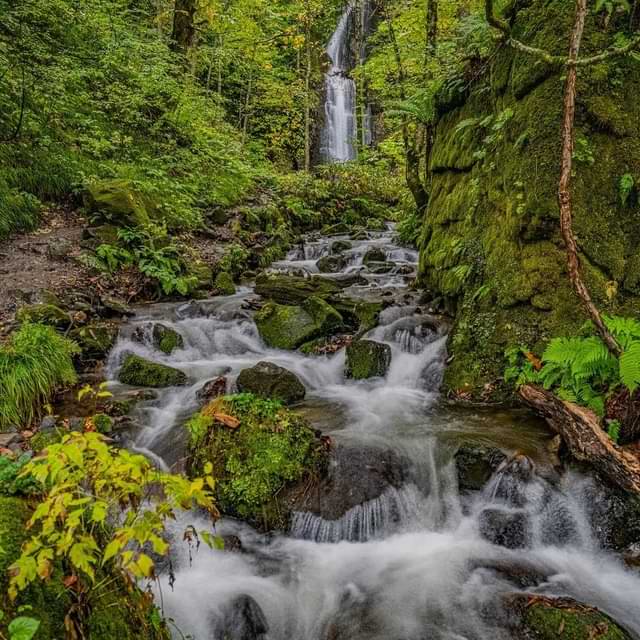
Oirase-keiryū
奥入瀬渓流
An easily walkable hiking trail in Lake Towada National Park that follows the 14 km of Oirase River through waterfalls and rapids created by rocks and logs.
It is possible to flank this gorge either on foot, along the promenade, or by car along the road that runs alongside the river. The glimpses immersed in nature are wonderful in every season so much so that it is considered a natural monument.
Aomori Gyosai Sentā
青森魚菜センター
About 400 meters further south, you will find this fish market where fresh fish arrives from the coast every morning. At this market, you can try the Aomori Nokke-don, a rice bowl covered with all the ingredients you want.
To compose your own meal, you need to purchase tickets at the market's information point and exchange them for your preferred ingredients at the over 30 food stands in the market!
Aomori typical foods
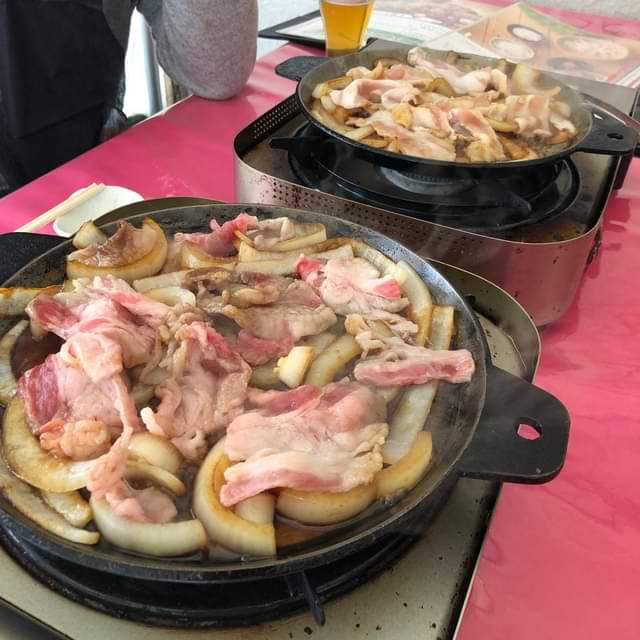
Bara-yaki
バラ焼き
It is a dish originating from Misawa city in which a large amount of onions and pork belly are entwined with a soy sauce-based sweet and salty sauce, grilled on an iron plate and eaten at the table.
Pic © hello.kumata
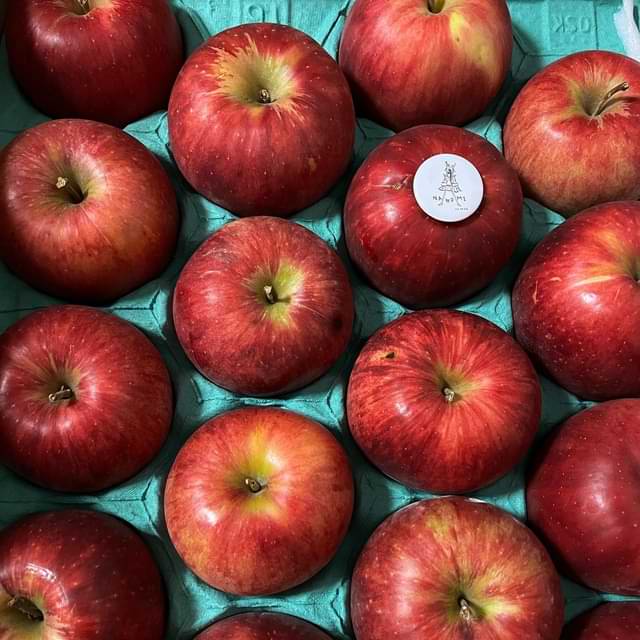
Ringo
りんご
The most famous apples of Japan, inside the Ringo-kōen Park there is a shop where you can buy souvenirs and foods of all kinds based on apples.
Pic © i_am_yowarin
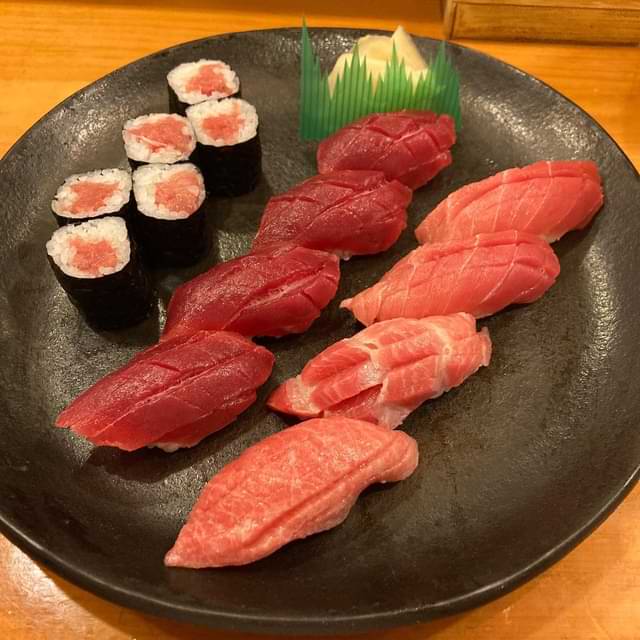
Ōma maguro
大間マグロ
It is a brand name for natural bluefin tuna caught off the coast of Ōma town. It is a nationally famous expensive tuna that can be caught between August and January.
The average weight of these tunas is around 100 kg, while in 1994 a tuna weighing 440 kg was caught and a monumental statue of its actual size was erected.
Pic © kura.n_1182
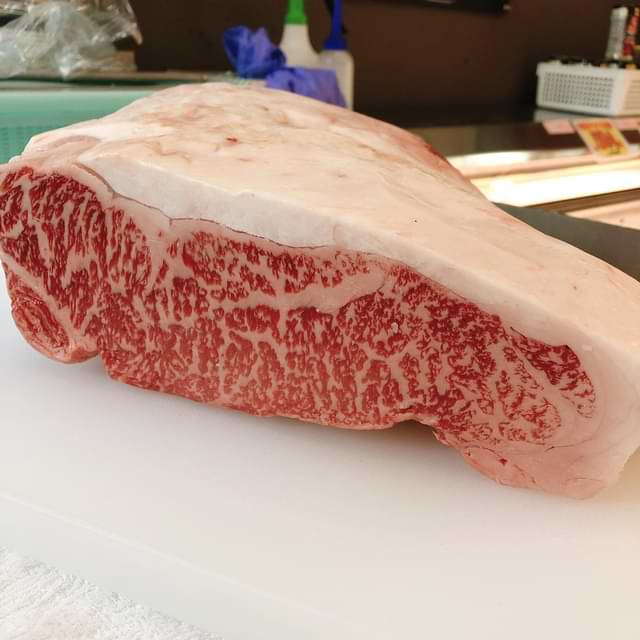
Kuraishi-gyū
倉石牛
Beef brand that has won numerous awards in recent years, surpassing other prestigious meats such as Matsuzaka-gyū. The meat comes from the Japanese black breed of cattle whose umami-laden fat melts in your mouth.
Pic © meatfoodskamaya
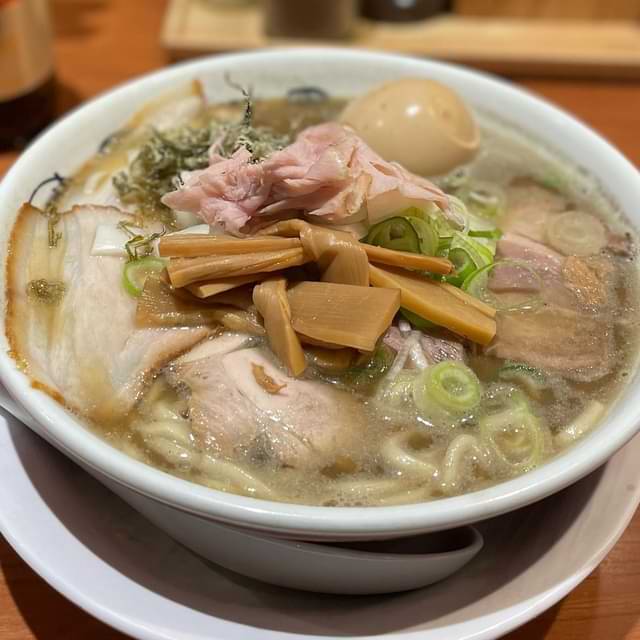
Tsugaru Rāmen
津軽しラーメン
It is a rāmen originating from the Tsugaru region, whose broth is obtained by boiling grilled sardines and dried sardines to which dashi broth and soy sauce are added.
In recent years, a variant of rāmen with a more intense flavor is taking hold in which pork and chicken bones are boiled for several hours before adding the sardines.
Pic © yoshitsugu_ueda
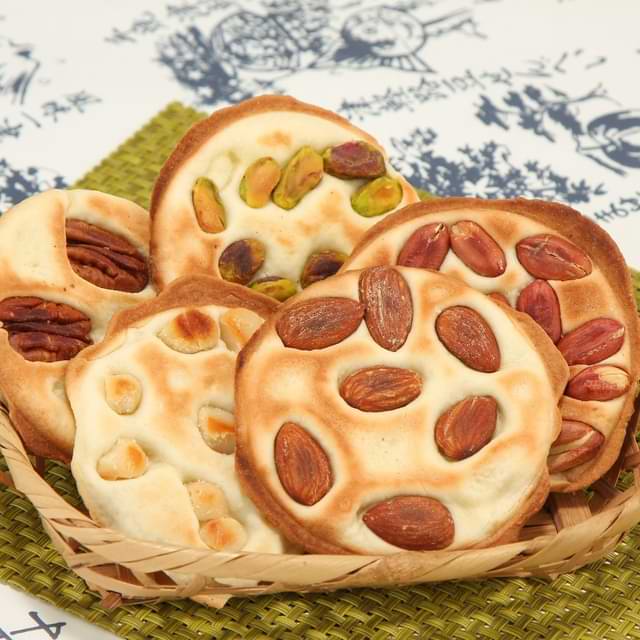
Tsugaru-ji Teyaki Senbei
津軽路手焼きせんべい
Senbei are glutinous rice crackers cooked by hand in special molds, typical throughout the country. In the 1950s, in the prefecture of Aomori, the Oyama chain of stores created its own recipe by inserting pistachios, almonds and peanuts inside the dough.
Pic © appliese_abc
Aomori local souvenirs
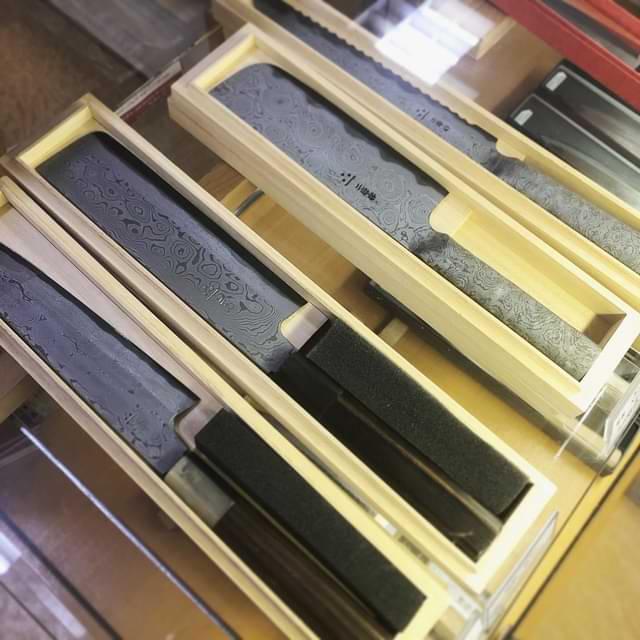
Tsugaru Uchihamono
津軽打刃物
These high-quality knives with excellent sharpness and durability are made using traditional quenching techniques such as “hizukuri” (smith forging) and “doro-nuri” (applying earthen varnish to strength the materials).
Pic © sakurano_hirosaki
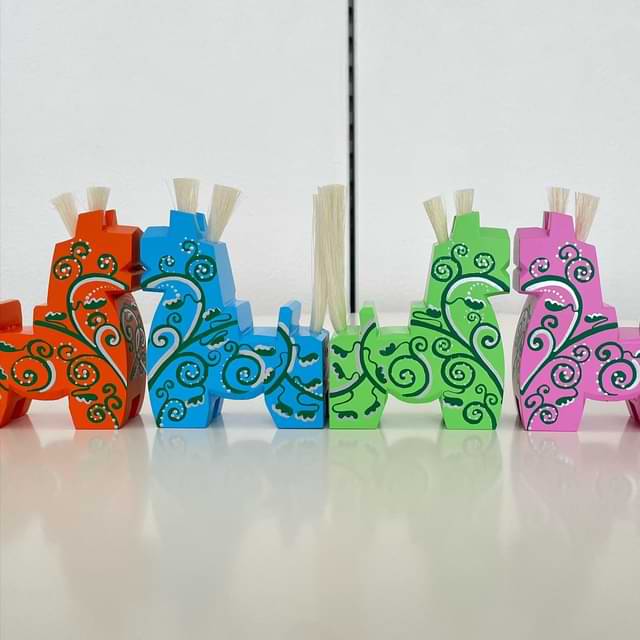
Yawata-uma
八幡馬
This is a folk craft of carved wooden horses that has been made since ancient times in the southern region of Aomori Prefecture. It is said that the wooden carved horses were created in hopes of their beloved horses' healthy growth, since the area was originally a breeding ground for horses called Nanbu. These souvenirs are sold before the autumn festival of Kushihiki Hachiman-gū Shrine, late September.
Pic © hachinohe_saigado

Tsugaru-nuri
津軽塗
Mainly produced and sold in Hirosaki City, the extremely labor-intensive technique of painting and polishing requires more than 40 steps and more than two months to complete, making the final product extremely robust.
The technique used in Tsugaru lacquerware, called “Togidashi Kawari-nuri,” is by smoothing out multiple layers of lacquer to create a pattern, and is divided into 4 different styles: Kara-nuri, Nanako-nuri, Monsha-nuri and Nishiki-nuri.
Pic © tobu_utsunomiya

Tsugaru Biidoro
津軽びいどろ
A style of glassware creation that, through beautiful colors, embodies the changing seasons of Aomori. The works are manually created in the "free blow" style using the sand of the Shichirinaga-hama coast.
Pic © umeto_ki
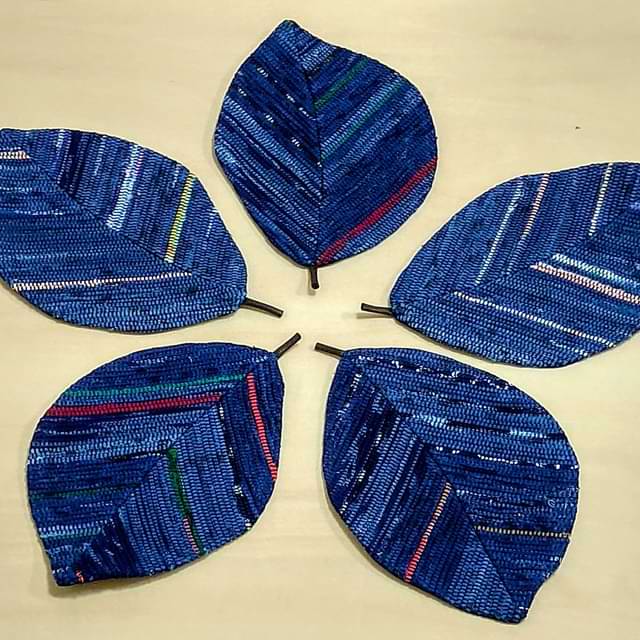
Nanbu Sakiori
南部裂織
Nanbu Sakiori is a style of weaving which originated in the Nanbu region. Because in this region it was not possible to produce cotton because of the cold weather, old kimono cloth were torn into thin pieces of string and then woven on a loom called jibata to create new thick and warm cloth.
Pic © bluelinkproject
Aomori prefecture nearby destinations
Cities
Coming soon
Towns & more
Coming soon
Aomori city transportation guide
Access to Aomori
Coming soon
Moving within the city
Coming soon
Bike rentals
Coming soon
From Tōkyō to Aomori
Coming soon
Aomori 1 day itinerary
We’re working on building an itinerary for every prefecture but we need quite some time to do it. If you’d like to help us, please consider to support us on Patreon for 3.5$ so we can put more effort on building Onigiro.com!
Morning
Coming soon
Afternoon
Coming soon

